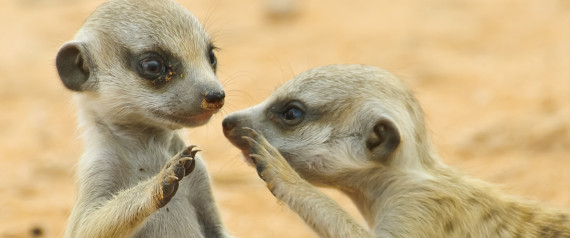
What can humans learn from meerkats? More than you might imagine.
A provocative new study shows that, among meerkats and other social animals, conflict yields better decisions about shared goals, such as foraging and avoiding predators. And the researchers behind the study -- in which existing scientific literature was used to create a complex model of decision-making -- think something similar to this so-called "swarm intelligence[1] " may play out in the human realm as well.
"Our results showed that shared decisions, made by animals without conflict, were often surprisingly poor[2] ," study co-author Dr. Christian List, professor of political science and philosophy at the London School of Economics, said in a written statement. "It's possible that this could be applicable to human collective decision making and would provide a strong argument for not excluding different or minority factions from collective decisions."
Why would conflict improve rather than detract from decisions? When animals in a social group differ slightly in their goals, errors made by individuals tend to cancel each other out. Or, as List put it, "Collective decisions in groups where there are lots of minor disagreements actually offset errors made by individuals."
So squabbles save the squabblers from bad decisions, at least if you're small and furry and live in a burrow. But how might this dynamic play out among people?
Dr. Larissa Conradt, a researcher at the Max Planck Institute for Human Development in Berlin and a co-author of the study, offered up a scenario in which there were two parliaments -- one whose members belong to a single political party and another whose members are from multiple parties. The latter parliament, she told The Huffington Post in an email, would be "better at finding effective solutions to pressing economic problems."
But Conradt stressed that there's no proof that the finding of the study holds true for humans, telling HuffPost Science that "we do not yet know to what extent our results also hold true for complex human decisions." But, she added:
One lesson that we can learn from the results is to stop and think new and differently about conflict. We need to investigate in how far conflict (i.e., diversity) of interests/preferences amongst decision makers might not be in the interest of all stakeholders in a decision. If it turns out that conflict is as beneficial to decision accuracy in complex decisions, as we have found in the basic animal decisions which we investigated, then we should all be much happier to include in collective decisions (in companies, parliaments, political organisations, etc.) individuals from other factions who have interests that differ to some extent from our own (always assuming that there is also a common main goal).
The study was published[3] in the November issue of the journal The American Naturalist.
Also on HuffPost:
References
- ^ swarm intelligence (en.wikipedia.org)
- ^ shared decisions, made by animals without conflict, were often surprisingly poor (www.mpg.de)
- ^ study was published (eprints.lse.ac.uk)
- ^ Send us a tip (www.huffingtonpost.com)
- ^ Send us a photo or video (www.huffingtonpost.com)
- ^ Suggest a correction (www.huffingtonpost.com)

0 comments:
Post a Comment
Click to see the code!
To insert emoticon you must added at least one space before the code.